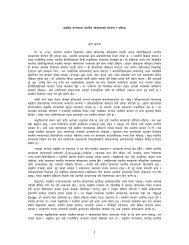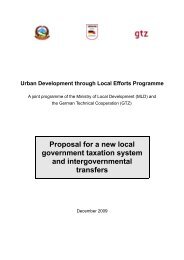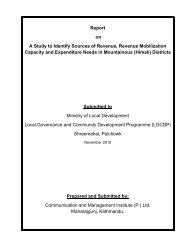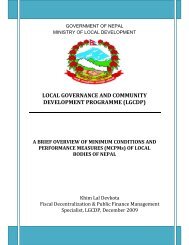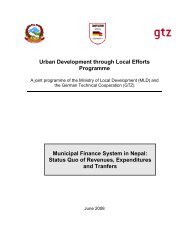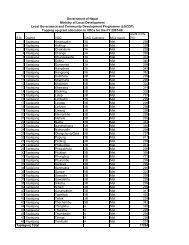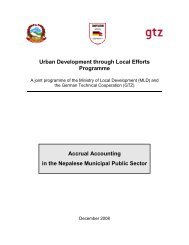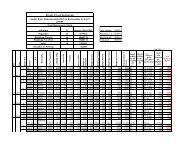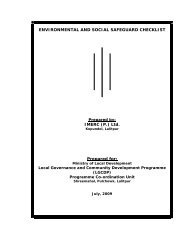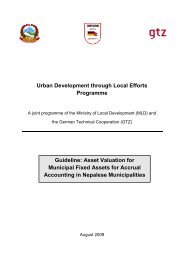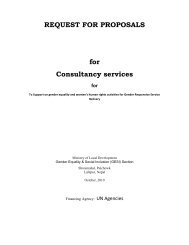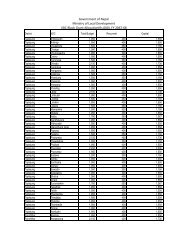LGCDP M&E Framework
LGCDP M&E Framework
LGCDP M&E Framework
Create successful ePaper yourself
Turn your PDF publications into a flip-book with our unique Google optimized e-Paper software.
a.) MANAGING RESOURCES<br />
DDCs<br />
Indicator: % of all 75 DDCs that meet all 15 minimum Conditions (as defined in 12/2008<br />
by MLD based on LSGA 1999) per fiscal year<br />
Rationale: This indicator broadly reflects the extent to which DDCs fulfil the minimum requirements<br />
for managing resources as defined in the Local Self-Government Act 1999.<br />
Limits: • Currently, only 12 of a total of 15 indicators are in use due to the absence of local<br />
elections. Until local elections are held, DDCs are assessed based on 12 instead of<br />
15 indicators.<br />
Baseline: 63% (06/2008)<br />
Target: 100% (12/2012)<br />
Means of<br />
National Synthesis Report by the Local Bodies Fiscal Commission (LBFC)<br />
Verification<br />
Frequency annually<br />
Responsibility Local Bodies Fiscal Commission (LBFC)<br />
Indicator: % of all 75 DDCs that score above 50 point in all 62 performance measurements<br />
and meet minimum score in all 8 functional areas per fiscal year<br />
Rationale: This composite, qualitative indicator broadly reflects the performance of DDCs in managing<br />
resources. Performance is measured through a score card with up to 100 points, including<br />
8 topics: planning and programme management performance, budget management,<br />
financial management performance, fiscal resource mobilization capacity, budget release<br />
and programme execution, communication and transparency, monitoring and evaluation,<br />
organization, service delivery and property management<br />
Limits: • Currently, only 57 out of 62 performance measurement criteria can be used due<br />
to the absence of elected local bodies.<br />
• For the baseline data collection in 2008, a slightly revised indicator framework was<br />
used then for the assessment in 2009. Slight modifications in this composite<br />
qualitative indicator can also be expected in the future, but should not effect the<br />
overall picture provided by this indicator.<br />
Baseline: 41% (06/2008)<br />
Target: 90% (12/2012)<br />
Means of<br />
National Synthesis Report by the Local Bodies Fiscal Commission (LBFC)<br />
Verification<br />
Frequency annually<br />
Responsibility Local Bodies Fiscal Commission (LBFC)<br />
Indicator: % of all 75 DDCs that spend more than 80% of planned capital development<br />
budget per year<br />
Rationale: This indicator refers to the capacity of DDCs to make use of earmarked funding. “Planned<br />
capital development budget” refers to budget line 6.4., 6.5., and 6.6.<br />
Limits: • An analysis of LBFC financial records needs to be done to calculate a baseline<br />
figure. The documentation required for such an analysis is reportedly available.<br />
Baseline: To be determined by analyzing LBFC financial records in 2009<br />
Target: To be determined after analyzing LBFC financial records in 2009<br />
Means of<br />
Local Bodies Fiscal Commission (LBFC) financial records<br />
Verification<br />
Frequency annually<br />
Responsibility Local Bodies Fiscal Commission (LBFC)<br />
13



